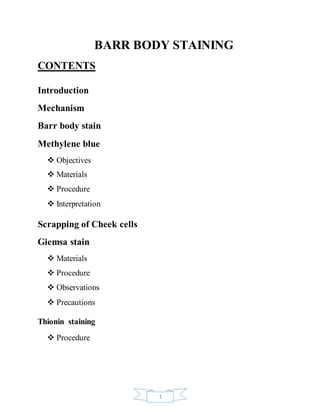Barr bodies are inactive X chromosomes that appear as darkly stained structures in the nuclei of female somatic cells. A buccal smear involves scraping cheek cells and staining them to identify Barr bodies and determine sex. Giemsa stain produces violet Barr bodies within pink nuclei. Thionin is a sensitive DNA stain that clearly shows dark blue or black Barr bodies near the nuclear envelope in female cells. The presence of one or more Barr bodies corresponds to the number of X chromosomes.














